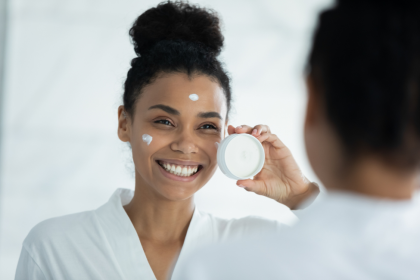Sweating is a natural bodily function, but it can be embarrassing and uncomfortable when it leaves unsightly, damp patches on your clothes. Luckily, there are ways to tame sweat and keep your clothes fresh throughout the day. This article explores five effective strategies to prevent sweat from ruining your outfit and boosting your confidence.
Understanding Sweat: Keeping Your Cool (and Dry)
Sweating is the body’s natural cooling system. When your core temperature rises, sweat glands release moisture that evaporates from your skin, creating a cooling effect. However, excessive sweating can be caused by various factors, including physical activity, hot weather, stress, and certain medical conditions.
Keeping Sweat at Bay: Strategies for Dry Clothes and Confidence
Here are five effective ways to manage sweat and keep your clothes dry:
- Dress for Success (and Sweat): Choosing the right fabrics is key. Opt for breathable, lightweight materials like cotton, linen, or moisture-wicking synthetics. These fabrics allow air to circulate and moisture to evaporate, keeping you cool and dry. For activewear, look for clothing designed to wick sweat away from the body.
- Embrace Layers: Layering allows for easy temperature regulation. Start with a moisture-wicking base layer, like a tank top or undershirt, that can absorb sweat and keep it away from your outer garments. You can then add or remove layers as needed throughout the day. This is especially useful in environments where the temperature fluctuates or if you plan to be active for extended periods.
- Antiperspirants vs. Deodorants: Know Your Weapon: While both products target sweat, they work differently. Antiperspirants contain aluminum chloride, which blocks sweat glands and reduces sweat production. Deodorants mask sweat odor with fragrances but don’t prevent sweating. Choose an antiperspirant for sweat control and deodorant for odor control, or consider combination products that offer both benefits. Apply antiperspirants at night to allow them to form a maximum block on sweat glands.
- Carry Sweat-Fighting Essentials: Be prepared for unexpected sweat outbreaks. Pack a travel-sized antiperspirant or deodorant wipes in your bag for quick touch-ups throughout the day. Carrying absorbent cloths or hand towels lets you discreetly pat away sweat and keep your clothes dry. Consider using sweat-proof liners for your bag to prevent dampness from transferring to your belongings.
- Invest in Sweat-Proof Essentials: Consider incorporating sweat-proof undergarments designed to absorb moisture and prevent sweat marks. Look for clothing with sweat-wicking technology, especially for high-sweat areas like armpits and backs. Many clothing brands offer sweat-proof garments designed for activewear or everyday wear.
Beyond Sweat Management: Lifestyle Changes for Long-Term Success
While the strategies above offer immediate solutions, consider these lifestyle changes for long-term sweat management:
- Stay Hydrated: Drinking plenty of water helps regulate body temperature and reduces the need for excessive sweating. Aim for eight glasses of water daily, and adjust based on your activity level and climate. Dehydration can lead to increased sweating as your body tries to conserve fluids.
- Manage Stress: Stress can be a significant trigger for sweating. Practice relaxation techniques like deep breathing, meditation, or yoga to manage stress and reduce sweat production. Finding healthy ways to manage stress can benefit your overall well-being and keep you more relaxed and calmer.
- Dietary Choices: Certain foods and drinks can increase sweating, such as spicy foods, caffeine, and alcohol. Pay attention to how your body reacts to different foods and adjust your diet accordingly. If you notice a link between certain foods and increased sweating, consider limiting your intake of those triggers.
- Consult a Doctor: If excessive sweating disrupts your daily life or you suspect an underlying medical condition, consult a doctor. They can diagnose the cause and recommend appropriate treatment options. In some cases, an underlying medical condition might be contributing to excessive sweating, so it’s important to consult a doctor if lifestyle changes don’t provide relief.
Confidence and Comfort: Taking Control of Sweat
Sweat is a natural part of life, but it doesn’t have to dictate your outfit choices or confidence level. By implementing the above strategies, you can effectively manage sweat and dry your clothes. Remember, a little planning and preparation go a long way in ensuring you stay cool, dry, and feeling fresh throughout the day. Embrace breathable fabrics, strategic layering, and sweat-fighting essentials to keep sweat at bay and project confidence in any situation.
This story was created using AI technology.













